Describing legume success stories in the EU: part 3 - France
During the Legvalue project partners pursued different cropping systems in practice.
In part 3 the download .pdf document summarises 6 successful legume cropping systems in FRANCE, each described in a single page.
1-Lentil, develop the crop from field to market
The farmer, set up on a small farm, seek to add value to his green lentil crop by marketing it in a short circuit. To do this, he wants to maintain the quality of his lentil throughout the growing cycle: he favours reasonable surface areas to control operations; he carefully monitors attacks by bio-aggressors to treat quickly and limit damage to his lentil; he takes care of his harvest and avoids threshing both dirty areas (field edges, weed-infested sectors, etc.) and clean areas of his plots at the same time to facilitate sorting operations; cold storage of his lentils to fight weevils; preparation for sale and bagging on the farm. In this way, he gains in autonomy and benefits, in addition, from the nitrogen inputs from the lentil for the following wheat and from better weed control at the rotation level.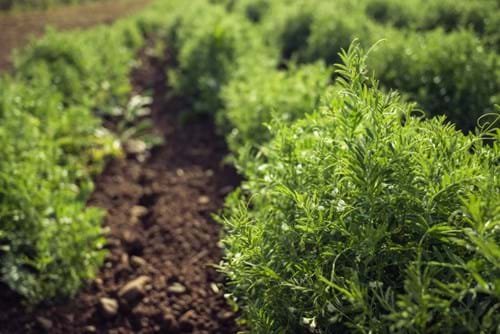
L’agriculteur, installé sur une exploitation de 45 ha, cherche à ajouter de la valeur à sa culture de lentille verte en la commercialisant en circuits courts. Pour cela, il souhaite maintenir une bonne qualité de sa lentille tout au long du cycle de culture : privilégie des surfaces raisonnables pour maîtriser les opérations ; surveille attentivement les attaques de bioagresseurs pour traiter rapidement et limiter les dégâts sur sa lentille ; soigne sa récolte et évite de battre en même temps les zones sales (bordures de champ, secteurs infestés par les adventices…) et propres de ses parcelles pour faciliter les opérations de triage ; stockage de ses lots de lentille au froid pour lutter contre les bruches ; préparation à la vente et ensachage à la ferme. Ainsi, il gagne en autonomie et bénéficie, en complément, des apports d’azote de la lentille pour le blé suivant et d’un meilleur contrôle des adventices à l’échelle de la rotation.
2-Soybean in OF technical ease combined with a good selling price
With soybean on his organic farm, he introduces diversity into the crop rotation with a species that is easy to grow and with the best gross margins (2019 = 730 €/t in human food; 2020 = 660 €/t in animal feed). Soybean is inoculated before sowing to ensure root nodules. He does not require fertilisation and suits well with mechanical weeding tools: weed harrow, rotary hoe, inter-row hoeing. Thus, the farmer controls weediness well during the crop cycle and recovers a clean plot for the next sowing. His sorting equipment allows him to conserve seed and to eliminate weed seeds and broken grains in his harvest. In addition, soybean leaves little residue on the ground, and “plows” the soil well thanks to his well-developed root system, which facilitates the establishment of following crops.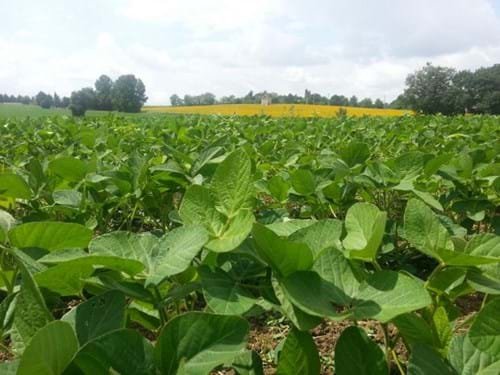
Avec le soja sur son exploitation BIO, l'agriculteur introduit de la diversité dans la rotation grâce à une espèce facile à cultiver faisant partie des cultures avec les meilleures marges brutes (2019 = 730 €/t en alimentation humaine ; 2020 = 660 €/t en alimentation animale). Le soja est inoculé avant implantation pour assurer les nodosités. Il ne nécessite pas de fertilisation et se comporte bien vis-à-vis des outils de désherbage mécanique : herse étrille, houe rotative, binage interligne. Ainsi, il maîtrise bien l’enherbement pendant le cycle de culture et récupère une parcelle « nettoyée » pour l’implantation du suivant. Son matériel de triage lui permet d’éliminer dans sa récolte les mauvaises graines et les grains cassés et de conserver de la semence. De plus, le soja laisse peu de résidus, et travaille bien le sol grâce à son système racinaire développé, ce qui facilite l’implantation des suivants.
3-Soybean an alternative to maize monoculture in the Southwest
The farmer, previously in monoculture of maize, has diversified his crop rotation by sowing soybean to (i) limit inputs by fixing atmospheric nitrogen and (ii) to take advantage of the action of the soybean roots on the soil to develop direct sowing on his farm. He is more interested in maximising economic margins rather than yields. In addition to soybean as the main crop, he inserts a double crop soybean (00 or 000) in direct seeding after a winter barley crop, which he harvests no later than mid-November. In this way, he limits erosion and crusting problems on his plots. In addition, this more diversified system than before allows him to increase the organic matter levels of his soils and to modify the weed flora on the crop rotation.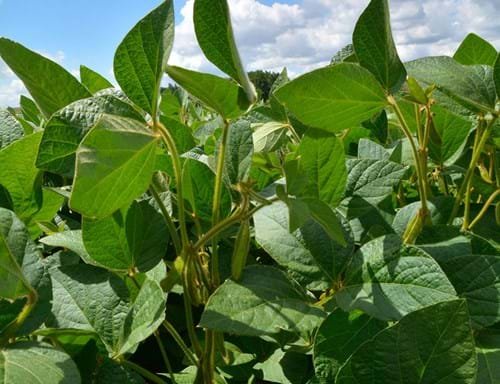
L’agriculteur, anciennement en monoculture de maïs, a diversifié sa rotation en implantant du soja pour (i) limiter les intrants en fixant l’azote atmosphérique grâce à aux légumineuses et (ii) profiter de l’action bénéfique des racines du soja sur la terre pour développer la pratique du semis direct sur son exploitation. Il cherche davantage à maximiser les marges économiques plutôt que les rendements. En plus du soja en culture principale, il insère en semis direct, après une culture d’orge d’hiver, un soja dérobé (00 ou 000), qu’il récolte au plus tard à la mi-octobre. De cette manière, il limite l’érosion et les problèmes de battance sur ses parcelles. De surcroît, ce système plus diversifié qu’auparavant lui permet de remonter les taux de matières organiques de ses sols et de modifier la flore adventice à l’échelle de la rotation.
4-Lentil in OF, a good previous for wheat with simple technical management
To lengthen his rotation, the farmer chose to grow organic lentils, a good precedent for wheat which requires little intervention between sowing and harvesting and which is well valued in organic farming (small market with interesting prices around 1500 euros/tonne). His very simple management does not require fertilisation and is carried out with simple agricultural machinery with yields around 1.6 t/ha. It is possible to use no-till depending on weather conditions and to harvest in windrows if the presence of weeds at the approach of harvest is a concern. This crop, on which he currently encounters few disease/pest problems, is an interesting lever for breaking the cycles of bio-aggressors in the crop rotation.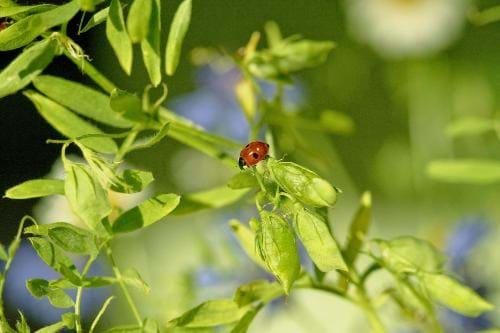
Pour allonger sa rotation, l’agriculteur a choisi la culture de lentille BIO, un bon précédent à blé qui requiert peu d’interventions entre le semis et la récolte et qui reste bien valorisé en agriculture biologique (petit marché qui laisse espérer des prix autour de 1500 euros/tonne). La conduite, très simple ne nécessite pas de fertilisation et s’effectue avec des engins agricoles simples, le tout pour des rendements d’environ 16 qtx/ha. L’agriculteur a la possibilité de recourir au non-labour suivant les conditions météo et à la récolte en andains si la présence d’adventices à l’approche du battage est préoccupante. Cette culture, sur laquelle il rencontre actuellement peu de problèmes de maladies/ravageurs, est un levier intéressant pour casser les cycles des bioagresseurs dans la rotation.
5-Lucerne a solution to improve feed autonomy
The farmer wanted to increase his protein autonomy by planting lucerne, a crop with good longevity and a good protein tonnage per hectare for his livestock activity. It behaves well in dry conditions and, thanks to its pivotal root system, it restructures the soil. Sown after a winter barley on which he practises false seed bed, it remains in cultivation for 4 years then a maize is sown. 4 cuts, each 30 to 45 days apart, are made per year for a silage yield of around 3 to 4 tonnes of DM per cut. At the crop rotation level, he benefits from the restitution of the nitrogen stored by the lucerne for the following crop, a gain in productivity and good control of the development of weeds, particularly thistles.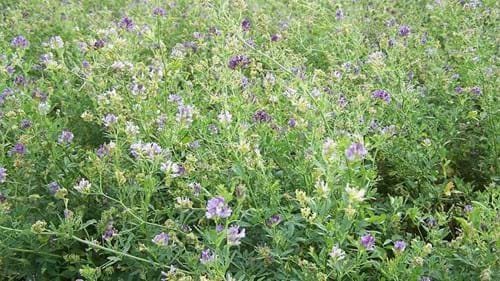
L’agriculteur souhaitait renforcer son autonomie protéique en implantant une luzerne, culture avec une bonne pérennité et un bon tonnage en protéine à l’hectare pour son activité d’élevage. Elle se comporte bien en conditions séchantes et de par son système racinaire pivot, elle restructure le sol. Semée après une orge d’hiver sur laquelle il pratique des faux semis, elle reste en culture pendant 4 années avant de laisser place à un maïs. 4 coupes, entrecoupées chacune de 30 à 45 j, sont réalisées par an pour un rendement ensilage autour de 3 à 4 tonnes de MS par coupe. A l’échelle de la rotation, il bénéficie de la restitution de l’azote stocké par la luzerne pour les cultures suivantes, d’un gain de productivité et d’un bon contrôle du développement des adventices, notamment des chardons.
6-Shared mobile sorter to autonomously grow and sort triticale pea mixture
The farmer, who is an organic farmer, uses a mobile sorter in co-ownership in order to be able to sort his associated crop harvests for animal feed, or to prepare his farm seeds. This tool allows him to improve the efficiency of production and use of mixtures on the farm and to consider further diversification of these mixtures. Since its acquisition, he has systematized the triticale/pea on his farm and no longer makes any pure triticale by default that he could either keep for his animals or sell. This association, managed in no-tillage and without inputs, allows him to obtain better performances than with a single crop, to secure the yields of the two species in the mixture and to improve the biological activity of his soils. Thanks to this system, in recent years he has been steadily reducing the use of nitrogen correctors in the ration of his dairy cows.
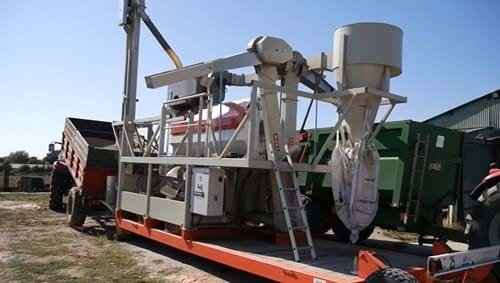
L’agriculteur, installé sur une exploitation en polyculture élevage BIO, utilise un trieur mobile en copropriété afin de pouvoir trier ses récoltes de cultures associées, ou encore pour préparer ses semences de ferme. Cet outil est un levier pour améliorer l’efficience de production et d’utilisation des méteils sur la ferme et lui permet d’envisager davantage de diversification de ces mélanges. Depuis l'acquisition du trieur, il systématise l'association triticale/pois sur son exploitation et ne fait plus aucun triticale pur par défaut, qu’il pouvait soit garder pour ses animaux si besoin, soit vendre en coopérative. Cette association, conduit en TCS et sans intrants, lui permet d’obtenir de meilleures performances qu’en culture seule, de sécuriser les rendements des deux espèces du mélange et d’améliorer l’activité biologique de ses sols. Grâce à ce système, ces dernières années, il est en diminution régulière de l’utilisation de correcteurs azotés dans la ration de ces vaches laitières.




